The rise of the staycation, localism and increased use of electric vehicles are set to transform how shoppers use forecourts. How are retailers and operators looking to respond?
- Forecourt sites in residential locations have been re-established as retail destinations supplying the community with groceries during the pandemic.
- Growing food-to-go offers from Pret, Leon and others provide customers with healthy options as well as Deliveroo opportunities.
- More electric vehicle charging points will allow retailers to capitalise on increased customer dwell time in forecourt locations.
The coronavirus pandemic has been a double-edged sword for forecourt operators. While fuel volumes have been battered by frequent lockdowns (Shell says they were down 70% during the first national lockdown last year), retail sales have ridden to the rescue.
Lumina Intelligence’s UK forecourt market report 2021 shows that compared with the convenience average forecourt shoppers are visiting more frequently, spending more time in store and increasing their basket size, resulting in an average spend of over £15.
Often situated in densely populated areas, the convenience and accessibility offered by service stations has placed them in the sweet spot of two key pandemic trends.
“There is no doubt the pandemic has significantly impacted the UK forecourt sector, with travel and movement heavily restricted,” says Lumina Intelligence insight director Blonnie Whist.

“However, sites in more residential and suburban locations have had a great opportunity to re-establish themselves as retail destinations that serve a local community. Fuel as a mission is in decline, so a forecourt’s retail offering is becoming more and more important in driving footfall.”
The trend for retailers to grow a presence on forecourts pre-dates the pandemic, but the past 18 months has seen a renewed urgency among businesses to capitalise on an attractive growth opportunity.
Pret recently opened its first forecourt shop in partnership with Motor Fuel Group (MFG), while Booths and WHSmith are among the retailers serving visitors to the UK’s first all-electric car-charging forecourt in Essex.
But just how big is the growth opportunity for retailers on forecourts? And is it open to all retailers, or just those selling groceries and food to go – the traditional heartland of forecourt retail?
Grocery game changer
Groceries have undoubtedly played a key role in the resilience of forecourt operators during the pandemic. “The convenience sector has definitely seen an increase in customers,” says BP chief executive of convenience for Europe Tracey Clements.
“We’ve also seen a difference in the composition of the basket of goods as more customers came to us for more of a top-up shop.”
BP is well placed to service this demand through its long-standing partnership with M&S Simply Food.
Shell too has a partnership with a leading UK grocer in the shape of Waitrose. Shell UK retail general manager Bernadette Williamson acknowledges the boost to convenient top-up shopping (90% of the population live within 15 minutes of a Shell service station), but says the trend has gone beyond that.

“There are people who are buying their weekly grocery shop through Deliveroo at Shell via a Little Waitrose,” she says. “We’ve got loyal customers who continue to buy a week’s worth of groceries well in excess of £100 basket sizes; in fact the largest basket size we had was £250 on home delivery. It just goes to show the real demand out there.”
Food to go has been another key revenue driver for forecourt operators. Indeed, the greater scale and breadth of food-to-go offerings has arguably been the standout development of the forecourt market in the past decade.
EG Group has been at the vanguard of the trend with a growing franchise business that now spans brands like KFC, Starbucks, Greggs, Subway, Burger King, Cinnabon and Sbarro, and will soon see a further addition following the group’s purchase of healthy fast-food brand Leon (a first drive-thru site has recently been confirmed for West Yorkshire).
With EG Group having recently opened its first Asda On the Move formats following its acquisition of the supermarket giant, it’s unsurprising that the business is bullish about future growth potential.
“EG Group’s vision is to deliver a modern and compelling retail experience that satisfies multiple shopping missions in one convenient destination whether for fuel, food service drive-thrus or grocery and merchandise,” says group commercial director Ilyas Munshi.
For those retailers disproportionately impacted by the pandemic, forecourts present an opportunity to diversify into an area with strong future growth potential.
“One of the things that we noticed very sharply during the pandemic was how we were so reliant on people coming to the shops we already had, most of which were near people’s workplaces,” says Pret UK managing director Clare Clough.
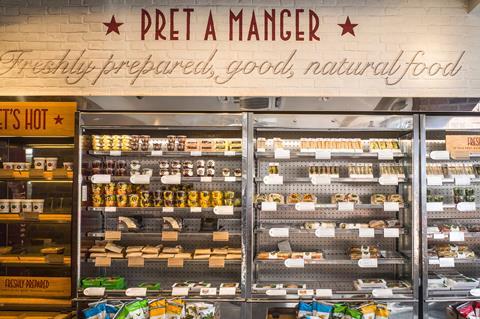
Pret’s first forecourt shop has recently opened at the MFG site in Southgate, north London, as part of the retailer’s strategy to get Pret’s offer to more people in different places.
“The forecourt opportunity chimes really well with that,” says Clough. “We know that people who are on the go want as much access to healthy fresh food as anyone else and so it’s a fantastic opportunity for us as a brand.”
The range carried at Southgate is akin to one of Pret’s smaller-format shops. It also boasts a click-and-collect option and offers marketplace deliveries through the likes of Deliveroo and Just Eat.
Clough says the shop’s early performance is ahead of expectations and is feeling “increasingly confident” about the forecourt format, adding: “I would hope to see a number of further shops, probably before the end of this year.”
An electric opportunity
Clough says the transition to electric vehicles is a “positive headwind” rather than a “driving factor” behind Pret’s move on to forecourts, but there’s little doubt the increased dwell time resulting from the need to charge an EV is a factor influencing the strategies of service station operators and their retail partners.
“We’re going to have to continue to have a very differentiated offer with a brilliant food offering at its core to ensure that people are going to come and dwell for maybe 10, 20 or 30 minutes, which is the time it will take to charge,” explains Clements.
In a sign of the changing face of the roadside network, in December Britain’s first all-electric car-charging forecourt opened for business in Braintree, Essex.
It’s operated by Gridserve, which aims to open more than 100 electric forecourts over the next five years, and increased dwell time is core to the planning of the retail and service offer.

“What we think about when we build an electric forecourt is that we’ve got someone’s interest for 20 minutes or more, so how can we make that 20 minutes as useful as possible,” says Gridserve founder and chief executive Toddington Harper.
The Braintree site offers a range of “Best of British” shops including WHSmith and Booths, as well as Costa Coffee and the Post Office.
Harper envisages these partnerships forming the basis of future sites. “Because we’re planning on doing so many sites it would just be impossible to switch and chop and change every time, so we’re looking to roll this out in partnership with our existing [retail] partners, and maybe some more in the mix as well.”
Since opening, Harper reports that around 20% of visitors to Braintree charge their cars, while 80% use the shops and services. “It’s fascinating,” he says. “We get a lot of people turning up just to use the Post Office.”
From a Booths perspective, head of business development Nic Karan explains that the partnership with Gridserve offers aligned sustainability and environmental values, and supports its multichannel growth strategy while solidifying a presence outside of its Northern heartlands.
Fashioning a new future for forecourts
Increased customer dwell time provides an opportunity for retailers to offer more than just the usual food, convenience or impulse purchase goods, adds Karan, noting that audience insights suggest hair and beauty, click-and-collect services, travel agencies, banking and dry cleaning would be welcome additions.
Williamson says Shell is “actively looking at what other services customers might find useful and associated with that what other brands might be appropriate” in the future.
However, she also notes that development of the service station offer must be future-proofed to account for improvements in charging technology. “The future [time taken to charge an EV] might be five minutes, or four minutes, which is not too different to refuelling a traditional car today. So to what extent do we need to make different offers for customers right now versus in a few years’ time is a really, really interesting question for us.”
Harper too is considering the countless possibilities of the future retail offer on Gridserve sites. The Braintree site already includes pods that act as flexible office or meeting space, but “if somebody wanted to use it as a nail bar they probably could” he suggests.
And what about non-food retail such as clothing and homewares? “Items that require a longer browsing time or more service, such as electronics, fashion and beauty, are some examples of retail sectors that could potentially benefit from utilising electric forecourt retail space,” says Booths’ Karan.
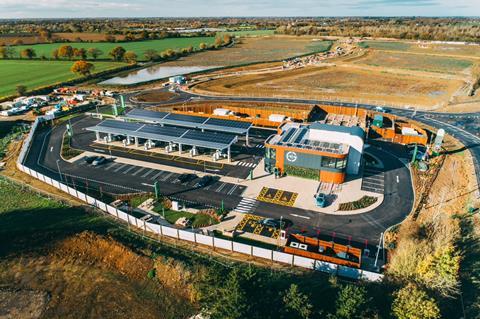
Although a fully stocked clothes store might be a leap too far in the immediate future, Harper has already had conversations about the possibility of a fashion brand kitting out a pod with augmented reality technology that would allow visitors to virtually ‘try on’ clothes and order them online. “We’re open minded and we want people to come to us with ideas,” he says.
What seems certain is that, due to their accessibility, forecourts will become key parts of a future retail infrastructure that includes an ever more extensive network of click-and-collect and home-delivery options.
Both Shell and BP have partnerships with Deliveroo for home delivery. Shell also hosts Amazon lockers on certain sites and has recently completed a successful click-and-collect pilot with John Lewis that will now progress to a wider roll-out. Both of these drive footfall to forecourts, providing a further opportunity for a top-up shop.
Ultimately, all forecourt operators and their retail partners will need to be flexible and agile in responding to future growth opportunities.
“I think our core areas are always going to be around food for now and the opportunity of a shop, but we’re completely open minded,” says Clements. “It’s the way in which people will use service stations in the future that will drive what services we need to have there.”




















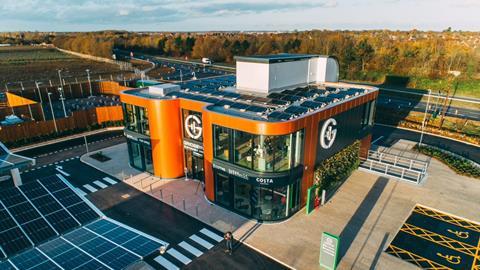
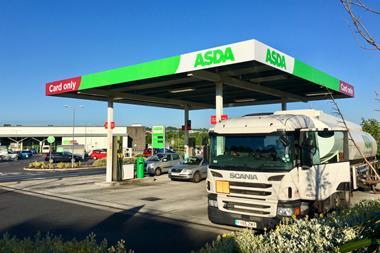
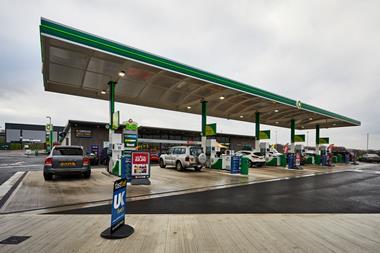
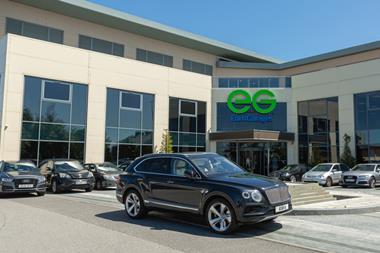
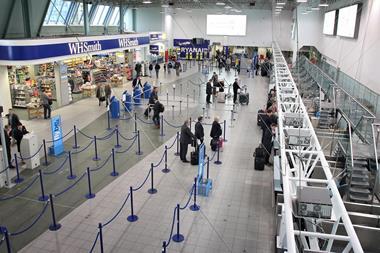


No comments yet